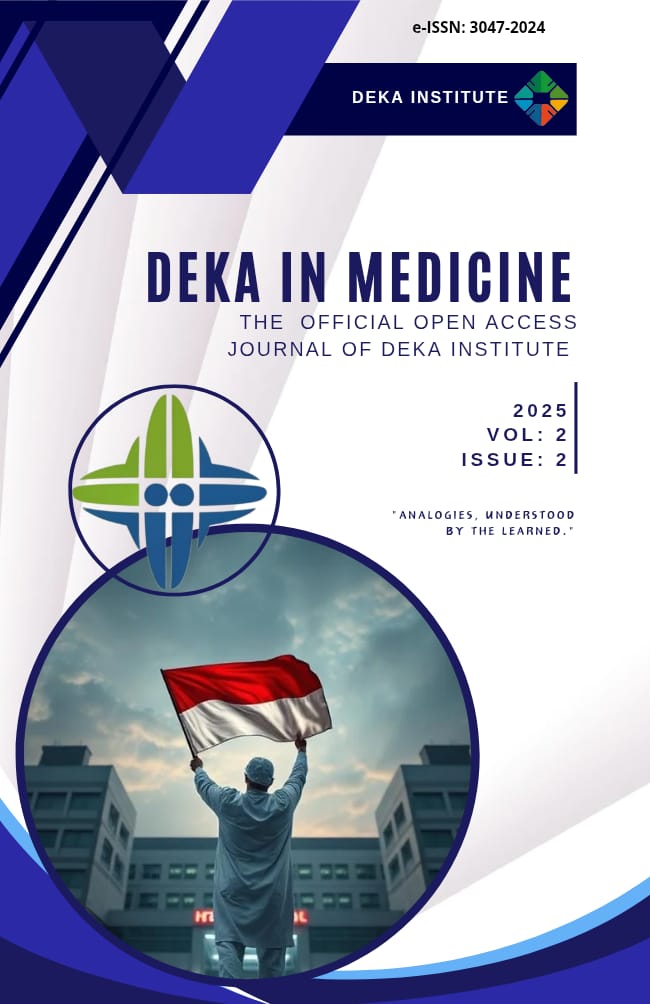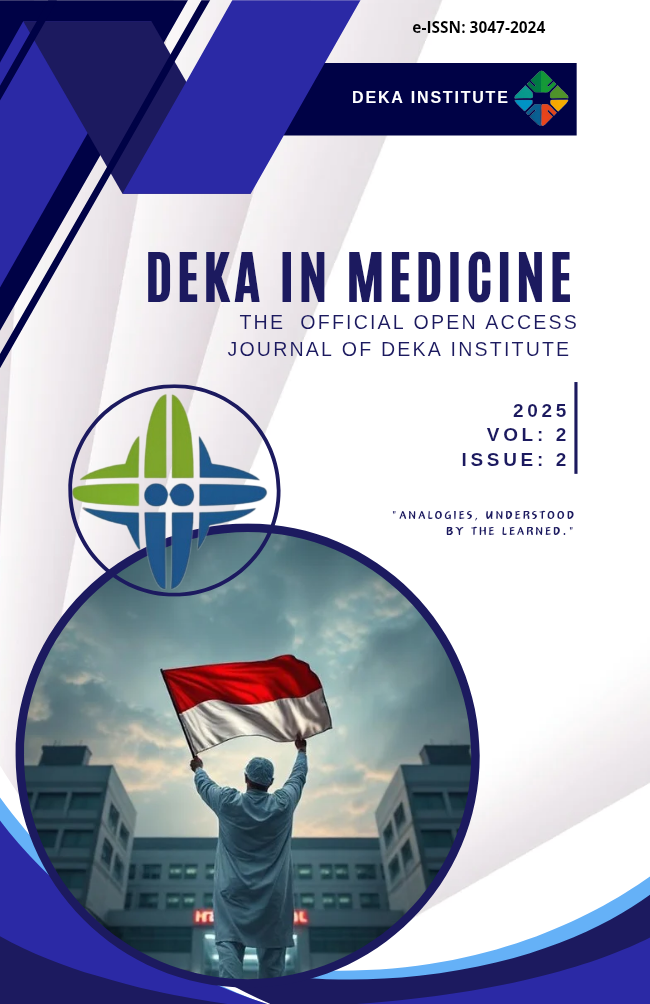DEKA protocols for meta-analyses: Strengthening study transparency through a modified PRISMA approach
DOI:
https://doi.org/10.69863/dim.2025.e669Keywords:
Meta-analysis, systematic reviews, evidence-based practice, scientific writing, publishing standardsAbstract
Meta-analysis has emerged as an increasingly vital method for synthesizing scientific evidence in support of data-driven decision-making. To maximize its contribution, meta-analysis manuscripts must be written in a systematic and informative manner. This article aims to provide a conceptual and technical guide on how to write a meta-analysis article that adheres to international scientific standards. In reporting meta-analyses, the title serves as a critical entry point for both readers and reviewers; therefore, it should clearly reflect the population, intervention, and outcome of interest, and include the phrase “a systematic review and meta-analysis” to facilitate indexing. An effective abstract should be concise and well-structured, encompassing the background, objective, methods, main findings, and conclusion, while maintaining clarity and self-sufficiency. The selection of keywords is equally important, as it significantly enhances article visibility in scientific databases; thus, the use of Medical Subject Headings (MeSH) is strongly encouraged. The introduction should present a logical framework that outlines the broader research issue and the specific covariates under analysis, along with clearly formulated objectives and hypotheses. The methods section must transparently describe the literature search strategy, inclusion and exclusion criteria, study quality appraisal, and statistical approaches, all aligned with PRISMA guidelines. Results should be reported systematically, with attention to heterogeneity, publication bias, and consistency of effects. The discussion should synthesize findings in relation to existing literature and theory, address study limitations, and identify directions for future research. The conclusion should highlight the clinical or scientific relevance of the main findings and outline opportunities for future exploration. When written in accordance with proper structure and scholarly principles, a meta-analysis article can achieve strong academic value and broad contributions to science and clinical practice.
References
1. Gilbert BW, Bissell Turpin BD. Complexities of evidence-based medicine: Challenges for practice and policy development. Am J Health Syst Pharm 2025;82(6):359-363.doi: 10.1093/ajhp/zxae253. PMID: 39230307
2. Mendlovic J, Mimouni FB, Arad I, et al. Trends in health quality-related publications over the past three decades: Systematic review. Interact J Med Res 2022;11(2):e31055.doi: 10.2196/31055. PMID: 36194464
3. Ahn E, Kang H. Introduction to systematic review and meta-analysis. Korean J Anesthesiol 2018;71(2):103-112.doi: 10.4097/kjae.2018.71.2.103. PMID: 29619782
4. Johnson BT, Hennessy EA. Systematic reviews and meta-analyses in the health sciences: Best practice methods for research syntheses. Soc Sci Med 2019;233(1):237-251.doi: 10.1016/j.socscimed.2019.05.035. PMID: 31233957
5. Lee YH. An overview of meta-analysis for clinicians. Korean J Intern Med 2018;33(2):277-283.doi: 10.3904/kjim.2016.195. PMID: 29277096
6. Liberati A, Altman DG, Tetzlaff J, et al. The PRISMA statement for reporting systematic reviews and meta-analyses of studies that evaluate healthcare interventions: explanation and elaboration. BMJ 2009;339:b2700.doi: 10.1136/bmj.b2700. PMID: 19622552
7. Tullu MS. Writing the title and abstract for a research paper: Being concise, precise, and meticulous is the key. Saudi J Anaesth 2019;13(Suppl 1):S12-S17.doi: 10.4103/sja.SJA_685_18. PMID: 30930712
8. Page MJ, Moher D, Bossuyt PM, et al. PRISMA 2020 explanation and elaboration: updated guidance and exemplars for reporting systematic reviews. BMJ 2021;372(1):n160.doi: 10.1136/bmj.n160. PMID: 33781993
9. Andrade C. How to write a good abstract for a scientific paper or conference presentation. Indian J Psychiatry 2011;53(2):172-175.doi: 10.4103/0019-5545.82558. PMID: 21772657
10. Pottier P, Lagisz M, Burke S, et al. Title, abstract and keywords: a practical guide to maximize the visibility and impact of academic papers. Proc Biol Sci 2024;291(2027):20241222.doi: 10.1098/rspb.2024.1222. PMID: 39079668
11. Dhammi IK, Kumar S. Medical subject headings (MeSH) terms. Indian J Orthop 2014;48(5):443-444.doi: 10.4103/0019-5413.139827. PMID: 25298548
12. Eldawlatly A, Alshehri H, Alqahtani A, et al. Appearance of Population, Intervention, Comparison, and Outcome as research question in the title of articles of three different anesthesia journals: A pilot study. Saudi J Anaesth 2018;12(2):283-286.doi: 10.4103/sja.SJA_767_17. PMID: 29628841
13. Shaheen N, Shaheen A, Ramadan A, et al. Appraising systematic reviews: a comprehensive guide to ensuring validity and reliability. Front Res Metr Anal 2023;8(1):1268045.doi: 10.3389/frma.2023.1268045. PMID: 38179256
14. Page MJ, Shamseer L, Tricco AC. Registration of systematic reviews in PROSPERO: 30,000 records and counting. Syst Rev 2018;7(1):32.doi: 10.1186/s13643-018-0699-4. PMID: 29463298
15. Abramovs N, Brass A, Tassabehji M. Hardy-weinberg equilibrium in the large scale genomic sequencing era. Front Genet 2020;11(1):210.doi: 10.3389/fgene.2020.00210. PMID: 32231685
16. Stang A. Critical evaluation of the Newcastle-Ottawa scale for the assessment of the quality of nonrandomized studies in meta-analyses. Eur J Epidemiol 2010;25(9):603-605.doi: 10.1007/s10654-010-9491-z. PMID: 20652370
17. Mohsina S, Gurushankari B, Niranjan R, et al. Assessment of the quality of randomized controlled trials in surgery using Jadad score: Where do we stand? J Postgrad Med 2022;68(4):207-212.doi: 10.4103/jpgm.JPGM_104_21. PMID: 35417999
18. Atallah E. Eligibility criteria: too big, too small or just right? Haematologica 2024;109(4):1021.doi: 10.3324/haematol.2023.283972. PMID: 37822257
19. De Cassai A, Boscolo A, Zarantonello F, et al. Enhancing study quality assessment: an in-depth review of risk of bias tools for meta-analysis-a comprehensive guide for anesthesiologists. J Anesth Analg Crit Care 2023;3(1):44.doi: 10.1186/s44158-023-00129-z. PMID: 37932825
20. Buchter RB, Weise A, Pieper D. Development, testing and use of data extraction forms in systematic reviews: a review of methodological guidance. BMC Med Res Methodol 2020;20(1):259.doi: 10.1186/s12874-020-01143-3. PMID: 33076832
21. Lin L, Chu H. Quantifying publication bias in meta-analysis. Biometrics 2018;74(3):785-794.doi: 10.1111/biom.12817. PMID: 29141096
22. Page MJ, McKenzie JE, Bossuyt PM, et al. The PRISMA 2020 statement: an updated guideline for reporting systematic reviews. Syst Rev 2021;10(1):89.doi: 10.1186/s13643-021-01626-4. PMID: 33781348
23. Hess DR. How to write an effective discussion. Respir Care 2023;68(12):1771-1774.doi: 10.4187/respcare.11435. PMID: 37699616
24. Amobonye A, Lalung J, Mheta G, et al. Writing a scientific review article: Comprehensive insights for beginners. ScientificWorldJournal 2024;2024(1):7822269.doi: 10.1155/2024/7822269. PMID: 38268745
Downloads
Published
How to Cite
Issue
Section
License
Copyright (c) 2025 Jonny Fajar

This work is licensed under a Creative Commons Attribution-ShareAlike 4.0 International License.

























